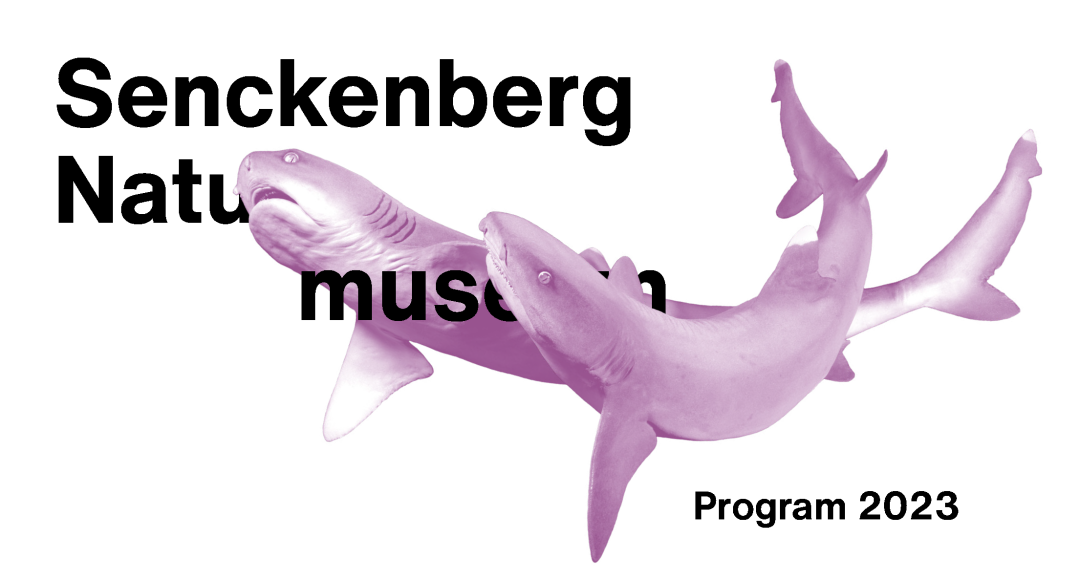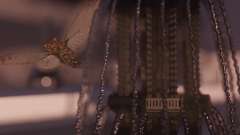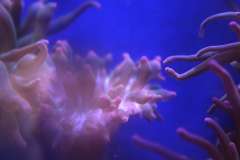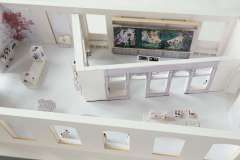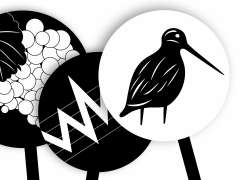A Year at Senckenberg: Art, City Insects, Nature, and Medicine
2023 Annual Program of the Natural History Museum Frankfurt published
Today, the Senckenberg Natural History Museum Frankfurt publishes its program for 2023: Visitors can expect special exhibitions covering Frankfurt’s insect fauna, an artistic-scientific examination of the world of plants, an artesian well in the Messel Pit, and biodiversity and its importance for us humans. An artistic look at the coral reef habitat and a new permanent exhibition space dedicated to the use of natural substances for pharmaceuticals and the production of medicines round out the offerings. Cooperations with the Schirn Kunsthalle Frankfurt, the Frankfurter Kunstverein, and the Städelschule illuminate topical focal points such as plastic pollution of the oceans, buildings as biodiversity landscapes, and the rapidly progressing loss of species. The exhibitions are accompanied by a diverse education and outreach program.
“Around 420,000 people visited our Frankfurt museum last year – a sensational figure that even surpass our ‘pre-Corona’ times. This once again illustrates the growing interest in nature and environmental issues and reinforces our role as a place of dialogue and trust,” says a delighted Museum Director Dr. Brigitte Franzen, and she continues, “We are starting the new exhibition year with an emphasis on art. Art is a visual and experimental ‘feedback space’ for science: Our audience is addressed on every sensual level and thus encouraged to engage with our scientific research content.”
The opening event will be the special exhibition “Maria Loboda: The Machine” on March 31. The newly designed Senckenberg Museum Cinema, be back in operation from that day on, will screen the first film by the recipient of the Ottilie Roederstein Fellowship of the Hessian Ministry of Science and Art and the Hessian Cultural Foundation. In its leading role, “The Machine” features an artesian well, which gushes forth without technical assistance. Such a well can also be found in the – industrially reshaped – Messel Pit. The film describes a surreal journey from Messel and the age of the Eocene 50 million years ago, over machines of the 18th and 19th centuries to today’s research laboratories.
In early June, it is time to “Meet the Reef!” with the “Art Perspective.” In the Coral Reef exhibition space, artists, natural scientists, and young people – under the leadership of artists Linda Weiß and Nina Queissner – will provide new perspectives on the value, protection, and endangerment of coral reefs. The exhibition’s centerpiece is a flexible display architecture by artist Markus Zimmermann.
“The beautiful and at the same time scientifically highly interesting works of the artists Maria Sybilla Merian, Elisabeth Schultz, and Ulrike Crespo are the focus of the following special exhibition ‘Floralia: Merian – Schultz – Crespo,’ which starts on September 8,” reports Franzen, and she continues, “In Frankfurt, these artists have attained mastery in the artistic-scientific debate and imaging over three consecutive centuries. The exhibition shows their works in an entirely new context and illuminates the relationship between science and art.”
The flora of the Main metropolis also plays a role in the exhibition “City Insects: Frankfurt’s Little Helpers” – for without the arthropods most plants would not exist. The exhibition invites visitors to acquaint themselves with the fascinating world of insects in Frankfurt and to explore it together with Senckenberg scientists. Who is responsible for the pollination of parsley, one of the seven herbs in “Grie Soß” (Frankfurt’s traditional green gravy)? Why do cities become refuges for insects? And how can we all help to protect butterflies and their ilk? Visitors will find the answers at the Senckenberg Natural History Museum, beginning on September 29.
At the end of November – in conjunction with the BMBF Research Initiative for the Conservation of Biodiversity (FEdA) – the focus will be on Senckenberg’s core topic: “Planet A* – The Exhibition for *Biodiversity” will feature facts about biodiversity as well as possible actions for its protection. Among the large dinosaur skeletons, it will offer a space for the exchange of opinions and ideas.
As of December 15, a new permanent exhibition on the second floor of the Natural History Museum will highlight the connections between “Nature + Medicine.” Historical as well as contemporary topics concerning human health and its relationship with nature will be featured in the modern room, which is characterized by a spectacular illuminated image behind a pharmacy storefront. Here, visitors can learn about the many ways in which natural substances are used in pharmacy and medicine. A separate area is dedicated to medicine for animals, which already inspired early humans
“In addition, we are very excited about and look forward to three cooperative projects that we initiated together with the Schirn, the Städelschule, and the Frankfurter Kunstverein,” relates the director of the Frankfurt museum, and she adds, “As part of ‘Plastic World,’ starting on June 22, the Schirn will present objects, installations, films, and documentaries and show the history of plastics in art as well as a broad panorama of the artistic use and evaluation of plastics in the mirror of society. Artist and scientist Pınar Yoldaş will be showing a new site-specific installation at the museum from her investigation ‘An Ecosystem of Excess,’ which has been underway for almost ten years. Its main emphasis are the oceans – once the birthplace of evolution, and today heavily polluted with plastic.”
With the “Frankfurt Prototype” in the courtyard of the Natural History Museum, the Städelschule will open a unique laboratory for a new cooperation between today’s arts and sciences in July. It will address urgent questions of the present and the convergence of biodiversity and architecture: How can we create space that conserves resources in the future? How can an entire building be transformed into a biodiversity landscape? And what will a museum of the future look like in this context?
In an interdisciplinary cooperation between the Frankfurter Kunstverein and the Senckenberg Biodiversity and Climate Research Center in Frankfurt, the exhibition “Bending the Curve,” which can be experienced at the Kunstverein starting on October 13, presents visitors with a mix of contemporary art, scientific exhibits, multimedia installations, and innovative materials. The theme is the rapidly progressing species loss and the importance of biodiversity and intact habitats for humans and nature.
“I am excited about our diverse exhibition offerings, and I am confident that we will once again be able to provide our visitors with unexpected, stimulating, and informative experiences!” adds Franzen in conclusion.
The annual overview is also available at museumfrankfurt.senckenberg.de/preview; all dates for the accompanying educational and event program can be found at www.senckenberg.de/kalender.
Opening hours of the Senckenberg Natural History Museum Frankfurt: Daily from 9 am to 5 pm, Wednesday until 8 pm, Saturday, Sunday, and holidays until 6 pm. The museum is closed on Good Friday, December 24, December 31, and January 1.
